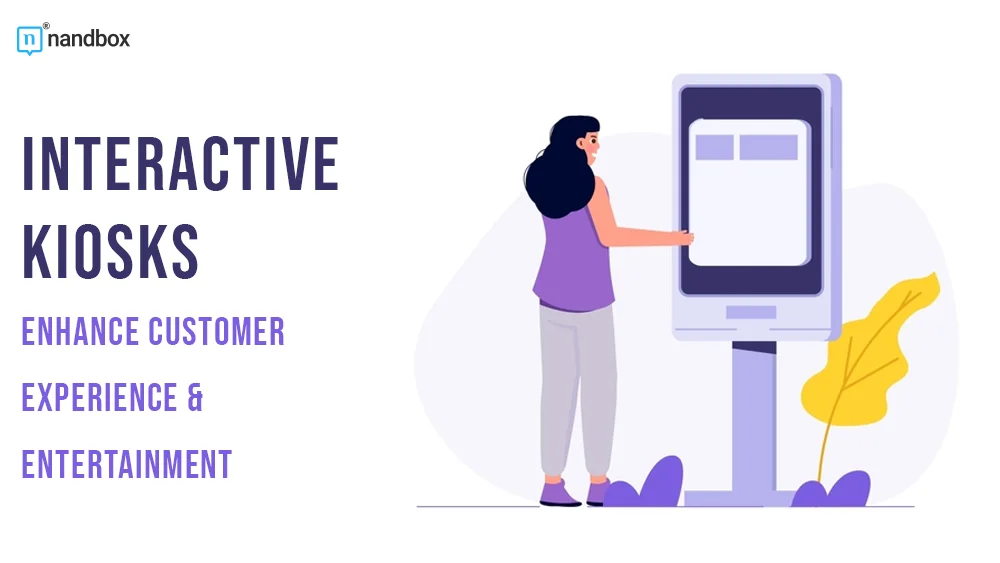A self-service kiosk is a standalone terminal equipped with customized hardware and software. They guide users through various tasks, from paying bills to obtaining information to purchasing movie tickets. Interactive kiosks offer swift, intuitive, and user-friendly experiences.
The idea of interactive kiosks can be traced back to 1977. At Urbana-Champaign, a pre-med student created the first self-service interactive kiosk. Named The Plato Hotline, the kiosk operated using the PLATO computer system and incorporated a plasma touch screen.
The kiosk allowed users to find information such as movie listings, maps, directories, bus timetables, campus events, and available courses.
This breakthrough was pivotal in commercializing interactive kiosks, leading to their widespread adoption in sectors like retail, healthcare, and public services. With user-friendly touchscreens and multimedia functions, they are easily adaptable across industries.
Today, these self-service systems are found in airports, malls, government buildings, and entertainment venues.
Evolution of Interactive Kiosks
Today, technological innovations such as touch interfaces, IoT, and cloud integration have transformed kiosks into versatile, interactive terminals used across numerous sectors. A fundamental shift in this evolution is the move toward more streamlined designs, allowing kiosks to be easily mounted in various settings.
With a VESA-approved wall bracket, kiosks can now be seamlessly anchored to walls or stands in bustling environments like government offices, transit hubs, and entertainment venues—maximizing space while maintaining an eye-catching presence.
Modern kiosks offer advanced functionality, better ergonomics, and flexibility, making them more accessible and user-friendly for everyday use.
| The Video Electronics Standards Association (VESA) is focused on creating and advancing technical standards for computer display technologies. |
Enhancing Citizen Interaction
Interactive kiosks are transforming how public services are accessed. They enable citizens to handle various tasks such as paying bills, scheduling appointments, and requesting official documents at their convenience.
Governments and municipalities rely on these user-friendly kiosks to improve service efficiency, reduce wait times, and offer round-the-clock access to essential services.
Often, kiosks are integrated with business communication phone to deliver seamless support.
For example, some kiosks utilize voice-over-IP (VoIP) technology, allowing users to connect directly with live representatives whenever additional assistance is needed.
This technology bridging enhances the efficiency of self-service solutions while offering human support when necessary. Let’s explore how different industries benefit from integrating interactive kiosks.
Self-Service Terminals in Government Buildings
Interactive kiosks enable citizens to independently complete tasks like license renewals, tax payments, and document requests in government offices. Their multi-lingual, user-friendly interfaces ensure accessibility for all.
These 24/7 self-service stations reduce queues and foot traffic. This allows staff to focus on complex tasks while providing citizens with faster, more efficient service.
Healthcare and Medical Services
Healthcare facilities widely use interactive kiosks for patient check-ins, scheduling, and insurance verification. These systems reduce administrative burdens and improve patient flow.
Telemedicine kiosks expand healthcare access in underserved areas, offering remote consultations. Some kiosks even integrate health monitoring tools for on-site diagnostics.
By automating routine tasks, these kiosks streamline operations and enhance patient experiences.
Public Transportation
Interactive kiosks now power public transportation systems globally. They streamline ticket purchase route planning and offer real-time updates. Integration with mobile payments and contactless technologies boosts convenience.
Commuters navigate urban transit more efficiently, reducing delays. During disruptions, kiosks deliver crucial service updates, enhancing overall transport efficiency.
Elevating Experiences through Interaction
In entertainment, interactive kiosks serve as pivotal touchpoints through which customers encounter brand experiences and interactive services designed to heighten enjoyment, customer engagement, and efficiency.
Some prominent examples of kiosk use in entertainment industries include:
Movie Theatres and Cinemas
Gone are the days of waiting in lines to purchase movie tickets from a cashier. Many cinemas are now fully equipped with self-service kiosks that allow patrons to select movies, choose seating arrangements, and even order snacks or refreshments.
These entertainment ATMs help reduce congestion, especially during peak hours, and enable theaters to process more transactions simultaneously.
Touchscreen kiosks deliver tickets and often allow customers to browse movie trailers, view upcoming show schedules, or check promotions—all of which contribute to greater consumer satisfaction and engagement.
Theme Parks and Entertainment Venues
Self-service kiosks are revolutionizing the theme park experience. Visitors can use these terminals to purchase tickets, print passes, and even book time slots for specific rides or attractions, minimizing waiting times.
Another advantage is customization: digital kiosks can tailor recommendations based on user’s preferences, including suggesting rides or activities targeted at families, couples, or thrill-seekers.
Adding real-time notifications about park events allows visitors to explore the grounds more efficiently, especially with dynamic maps or GPS integration.
Digital Advertisement and Games
Entertainment is no longer passive; increasingly, visitors participate actively through interactive kiosks in shopping malls, airports, or entertainment hubs that offer interactive games, short quizzes, or augmented reality (AR) experiences.
Brands leverage these platforms for advertising, encouraging user interaction and engagement with promotional content. They often drive conversions through coupons or prizes based on engagement at these kiosks.
Features Driving the Success of Interactive Kiosks
Interactive kiosks have revolutionized industries by offering a range of invaluable features. They empower users with self-service efficiency, allowing them to complete tasks independently while reducing businesses’ operational workloads.
Their user-centric design, intuitive touch screens, and multilingual capabilities ensure accessibility for diverse populations.
Operating 24/7, these kiosks provide unprecedented flexibility, particularly beneficial in banking, transportation, and healthcare. Many kiosks now leverage AI and cloud-based systems to deliver personalized experiences, enhancing user satisfaction.
Additionally, their sophisticated infrastructure enables real-time data analytics, allowing operators to track customer behaviors, make strategic decisions, and address issues promptly.
These combined features drive interactive kiosks’ widespread adoption and success across various industries.
| Secure User Authentication: Many kiosks offer secure login options, such as biometric scans (fingerprint or facial recognition) or PIN codes, enhancing security for sensitive transactions. |
Challenges and Considerations
While interactive kiosks provide numerous benefits, we must address specific challenges and considerations during deployment:
- Security Concerns: As transactions often involve sensitive personal or payment data, kiosks must embed cybersecurity features to mitigate the risk of fraud and data breaches.
- Maintenance and Upgrades: Kiosks must undergo regular maintenance to remain functional. Broken-down kiosks can quickly become sources of user frustration, which is why prompt technical support is vital.
- Accessibility for All: Despite offering multilingual interfaces, kiosks must comply with accessibility standards so people with disabilities, including limited vision, hearing, and mobility, are not left behind.
Future of Interactive Kiosks
The future of interactive kiosks is exciting. It expands into augmented reality (AR), AI-powered virtual assistants, and biometrics-enabled interactions. These innovations will make interactions faster, safer, and ultra-personalized.
Moreover, integrating voice-activated services and gesture-based control could redefine how we experience public services and entertainment. With the rise of smart cities, interactive kiosks are expected to tap into vast networks of connected devices, playing a more prominent role in delivering public services efficiently and improving the overall urban living experience.
In entertainment, deeper integration with mobile applications or wearable technology will enable more seamless and personalized interactions, enhancing everything from user guidance in large event spaces to entertainment tailored to individual tastes.
By harnessing user-centric technology and artificial intelligence, kiosks will continue redefining industries to enhance customer satisfaction and operational efficiency, shaping the future of digital interaction in diverse settings.





